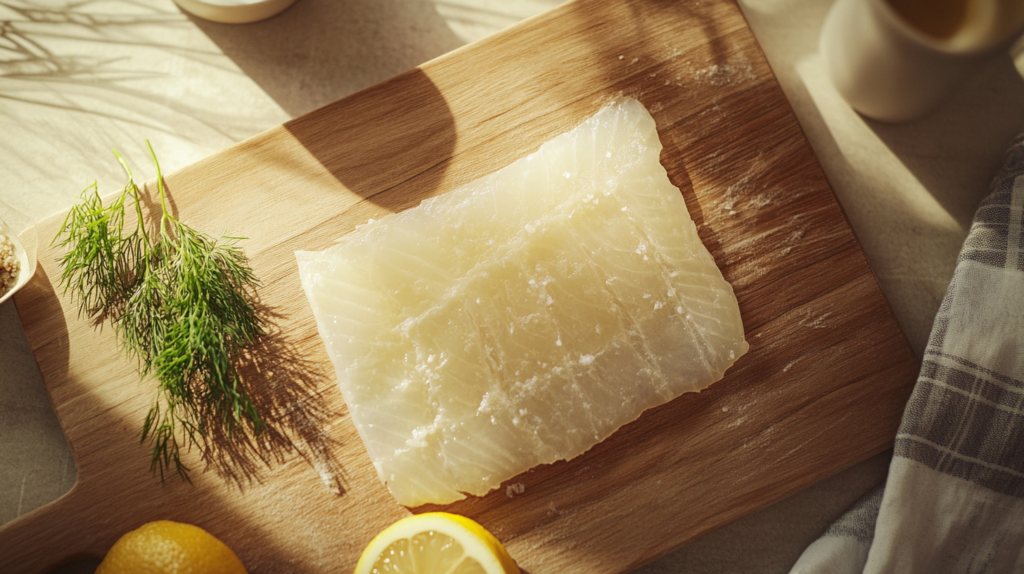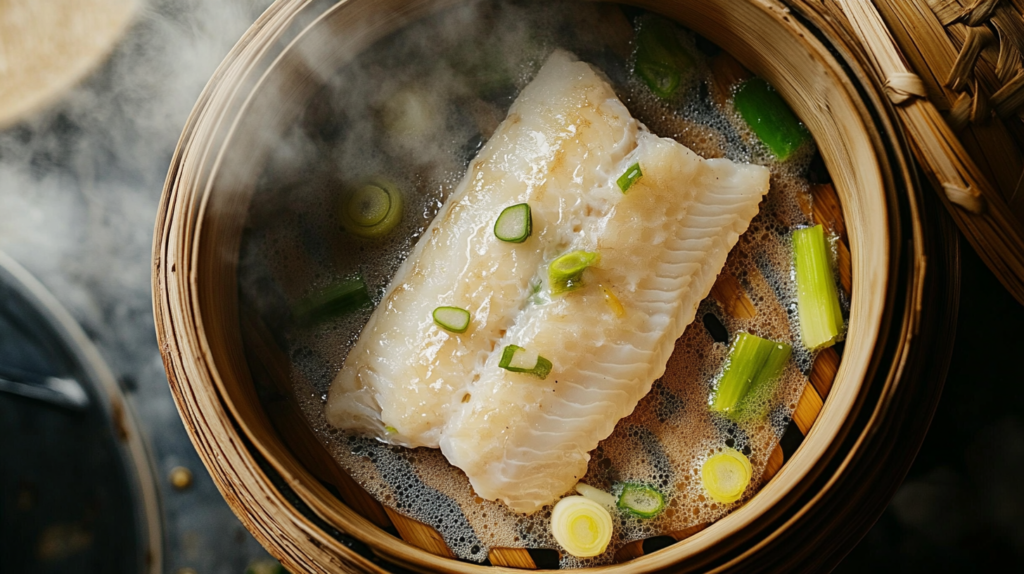A quick and clear guide on what fish not to fry? Learn which varieties are better prepared by other cooking methods to preserve their flavor and texture.
Understanding the Qualities of Fry-Friendly Fish
Selecting the right fish for frying involves more than just personal taste. Indeed, texture, moisture content, and fat levels all matter. Furthermore, some fish simply do not stand up well to hot oil and crisp coatings. Conversely, fish with a firm structure and moderate fat content often excel. Therefore, identifying what fish not to fry? helps ensure a better culinary experience.
Because certain fish become dry or fall apart when fried, choosing wisely affects both flavor and presentation. Another important factor is the thickness of the fillet. Comparatively, thicker, meatier fillets tend to handle the frying process better. Meanwhile, delicate fillets turn mushy. Likewise, extremely lean fish may lack the richness required for deep-frying. Consequently, knowing the traits that define fry-friendly fish streamlines your cooking decisions.
Altogether, understanding what fish not to fry? leads to tastier meals and less waste. Generally, fish with delicate flesh fare poorly in hot oil. Especially when you crave a crisp exterior and moist interior, choosing the wrong fish can disappoint. Thus, learning which varieties fail to fry well saves you time and frustration.
What Fish Not to Fry? Identifying Delicate Species
Fragile White Fish and What Fish Not to Fry?
Some white fish, while delicious in other preparations, do not respond well to frying. What fish not to fry? Consider delicate flounder, sole, and certain flatfish as prime examples. Comparatively, these have extremely thin fillets that break apart easily. Because their moisture content is high, they release too much liquid, causing the coating to become soggy. Eventually, you end up with a flimsy, greasy result. Undoubtedly, such fish are better steamed, poached, or baked. Hence, if you love flounder’s flavor, avoid frying. Instead, choose a gentler method to preserve its subtle taste.
Another factor is that thin fillets cook unevenly in hot oil. Initially, the outer layer browns too quickly, while the inside remains undercooked. Consequently, the texture suffers. Therefore, skip the fryer when handling these fish. Because they are so lean, they do not develop that rich, crispy crust many crave in fried dishes. Equally, even if you try a tempura batter or a light dredge, their delicate nature makes them crumble under heat and handling.
Very Lean Fish and What Fish Not to Fry?
Lean fish also struggle in the frying pan. What fish not to fry? Consider fish like haddock or pollock if they are exceedingly thin, dry, or flaky. Although these can sometimes fry okay if handled very carefully, they lack the natural oiliness that supports a crispy crust. Basically, you need some natural fats to get that signature fried taste and texture. Eventually, without enough fat, the fish can taste bland and dry, no matter how careful you are.
Furthermore, lean fish often stick to the cooking surface. Even with nonstick pans or careful oil temperature control, their fragile flesh is prone to damage. Meanwhile, the lack of moisture and fat means they do not hold breading well. Subsequently, the coating falls off, resulting in a patchy, unsatisfying appearance. Ultimately, these fish are better suited for baking, broiling, or steaming.
High-Moisture Fish and What Fish Not to Fry?
Sometimes, fish contain so much moisture that frying them becomes challenging. What fish not to fry? Varieties like cod or certain freshwater species with excessively wet flesh can make it hard to achieve a crisp crust. While cod can fry decently when very fresh and thick, overly moist fillets may still fail. Because the water content turns to steam, the batter may bubble and separate. Consequently, the final product lacks that tight, even crust you want from a fried fish dish.
Moreover, too much moisture leads to a soggy texture. Initially, you may think patting the fish dry solves this issue, but deep moisture levels remain inside the flesh. Eventually, as the fish cooks, it releases water, softening the crust. Comparatively, fish like halibut or grouper, which balance moisture and density, fry more successfully. Thus, if a fish seems watery, frying may not be the best method.
What Fish Not to Fry?
What Fish Not to Fry? Choosing Alternatives for Tender Fillets
When pondering what fish not to fry? think about tenderness. If a fillet is overly tender, it may not hold its shape under high frying heat. Meanwhile, a delicate fish that flakes apart when touched softly is usually ill-suited for deep-frying. Instead, consider baking en papillote, steaming with aromatics, or poaching in flavorful broths. These cooking methods ensure the flesh stays intact and moist. Equally, lighter cooking styles accentuate subtle flavors without the risk of oily, collapsed fillets.
Additionally, if you truly want to prepare these tender fish in a fried form, consider shallow pan-frying at a lower temperature. However, even then, you must remain cautious. Because delicate fish require gentle handling, frying them might be more trouble than it’s worth. Another solution is to use a protective coating, like a sturdy batter or a wrapping of sturdy leaves (banana leaves, for example). Nonetheless, these techniques are not foolproof.
What Fish Not to Fry? Delicate White Varieties That Fail in Hot Oil
Many popular white fish are known for their mild flavor and flaky flesh. Yet, what fish not to fry? Sole, flounder, and thin fillets of hake or whiting often struggle in hot oil. Because their flesh lacks the structural integrity needed, they fall apart easily. Consequently, these fish end up in bits and pieces rather than intact fillets. Another reason is their subtle flavor. Strong frying aromas and oiliness overshadow their gentle taste, diminishing their appeal.

Furthermore, delicate white fish rarely benefit from a heavy breading or thick batter. Instead of enhancing flavor, the coating may overwhelm it. Undoubtedly, these fish are better savored through lighter techniques. Poaching in a lemon-herb broth or steaming with ginger and scallions preserves their delicate charm. Meanwhile, pairing them with a light sauce can add dimension without the heavy oiliness of frying.
What Fish Not to Fry? Examples of Overly Oily or High-Moisture Species
Interestingly, certain oily fish also do not fry well. What fish not to fry? Consider fish that are either too oily or have a texture unsuited to frying. Mackerel, for instance, has a robust flavor and high oil content. While some cooks fry it, the strong flavor can intensify unpleasantly when subjected to hot oil. Additionally, oily fish can produce a heavy, greasy finish.
Meanwhile, some freshwater species with soft, mushy flesh are poor candidates for frying. Because their texture never firms up properly, they yield a meal lacking the crispness and firmness associated with fried fish. Moreover, their flavor profile might not harmonize with frying’s richness. Thus, it’s better to grill or smoke these fish to bring out their best qualities.
What Fish Not to Fry?
Understanding What Fish Not to Fry? to Improve Cooking Outcomes
When you know what fish not to fry? you gain greater control over your culinary results. Conversely, randomly choosing any fish to fry often leads to disappointment. Thus, building knowledge about various fish species helps you pick suitable cooking methods. Eventually, this knowledge saves time, money, and stress. Moreover, it broadens your culinary repertoire. Because not all fish are equal, understanding their unique properties guides you toward more delicious outcomes.
Additionally, by avoiding frying fish that fail in hot oil, you reduce food waste. Instead of throwing out ruined fillets, you transform them into perfect meals by choosing the right techniques. Therefore, identifying what fish not to fry? ensures consistently satisfying results. Indeed, your confidence in cooking grows as you apply these insights to your everyday kitchen routine.
Applying Knowledge of What Fish Not to Fry? to Choose Better Recipes
Selecting recipes becomes easier once you grasp what fish not to fry? For example, if you plan a menu featuring delicate white fish, consider gentle cooking methods. A simple baked sole with fresh herbs or a lightly poached flounder dish can surpass a poorly fried attempt. Similarly, when you know which species lack the stability to fry, you avoid disappointing guests or family members.
Furthermore, restaurant menus often give clues about preferred cooking styles. Notice how certain fish appear as grilled, baked, or broiled options instead of fried. Undoubtedly, chefs understand what fish not to fry? and shape their menus accordingly. By following their lead, you refine your approach at home and ensure every meal delights the palate.
Mastering What Fish Not to Fry? for Healthier and Tastier Choices
Frying, while delicious, adds fat and calories. Knowing what fish not to fry? can guide you toward healthier meals. If the fish is too delicate or lean for frying, consider a lighter method. Steaming, for example, preserves nutrients and natural flavors without extra oil. Meanwhile, baking with a thin brush of olive oil offers crisp edges without deep-frying.
Moreover, avoiding frying the wrong fish enhances taste. Because delicate flavors vanish under heavy oils, choosing a more suitable method allows subtle nuances to shine. Thus, you enjoy a more authentic seafood experience. Another advantage is that non-fried preparations often require fewer ingredients and less cleanup. Consequently, you spend less time scrubbing pans and more time savoring your meal.
If you’re looking for simple ideas and step-by-step guides to transform delicate fish into delicious meals, check out our Rockfish Recipes Made Simple for inspiration.
Techniques to Enhance Non-Fried Preparations
If you have determined what fish not to fry? focus on alternative cooking methods. Poaching fish in a fragrant broth infuses it with gentle flavors. Choose aromatics like shallots, garlic, herbs, or citrus zest. Another approach is steaming, which preserves delicate textures. Simply place fish over simmering water, cover, and let gentle heat do the work. Meanwhile, these methods retain moisture, ensuring every bite is succulent.

Baking is another reliable technique. Lightly season the fish, drizzle a bit of olive oil, and add a splash of white wine or lemon juice. Bake at moderate heat until flaky. Another method is en papillote, where you wrap the fish in parchment paper with vegetables and seasonings. The steam created inside the package cooks the fish evenly. Basically, this approach is foolproof and elegant. Because these cooking styles respect the fish’s character, they are perfect alternatives when you know what fish not to fry?
Flavor Pairings for Fish Not Suited to Frying
Fish better served by gentler methods often have delicate flavors. Enhance them with subtle, fresh ingredients. Consider fresh herbs like dill, parsley, chives, or basil. Because these herbs don’t overpower the fish, they complement its natural sweetness. Additionally, bright citrus flavors work well. A squeeze of lemon or a bit of orange zest brightens each bite.
For heartier flavors, consider mild sauces or light vinaigrettes. A simple mixture of olive oil, lemon juice, and chopped capers adds complexity. Meanwhile, a dollop of herb butter can elevate the experience. Undoubtedly, these gentle pairings highlight the fish’s essence. Consequently, you enjoy a meal that feels balanced and satisfying.
Common Mistakes When Frying the Wrong Fish
Frying a fish that is not meant to be fried often leads to avoidable mistakes. One common error is overcooking. Because delicate fish cook quickly, a moment too long in hot oil results in dryness or disintegration. Another issue is uneven browning. Certain fish do not hold coatings well, causing patchy results. Additionally, the oil temperature may become unstable as moisture escapes, affecting crispness.
Another mistake involves choosing the wrong breading. A thick, heavy batter might overwhelm a delicate fish, while a simple flour dredge might not stick at all. Furthermore, inadequate patting dry leads to splattering and uneven frying. Consequently, you spend more time cleaning and less time enjoying your meal. Therefore, knowing what fish not to fry? prevents these frustrating scenarios and encourages more successful cooking adventures.
Kitchen Tools and Tips for Non-Fried Methods
Once you know what fish not to fry? equip your kitchen with tools that support alternative methods. A steamer basket is invaluable for gentle cooking. Likewise, a poaching pan or a shallow skillet allows you to simmer fish in flavorful liquids. Because these tools maintain controlled temperatures, you achieve consistently tender results.
A parchment-lined baking sheet helps when roasting or baking fish. Using parchment simplifies cleanup and prevents sticking. Additionally, a fish spatula, with its thin and flexible edge, lifts delicate fillets without tearing. Furthermore, a reliable instant-read thermometer ensures proper cooking temperature. By incorporating these tools, you increase your confidence and expertise in preparing fish without frying.
Regional and Cultural Considerations
Culinary traditions vary across regions, and so do preferences for cooking fish. In some cuisines, certain fish are never fried due to cultural habits or availability. Understanding local customs helps you learn what fish not to fry? For example, in Mediterranean cooking, many delicate white fish are grilled or baked rather than fried. Similarly, in certain Asian cuisines, steaming fish with ginger and soy sauce is a time-honored practice.
These traditions reflect a desire to preserve the fish’s intrinsic flavors. Furthermore, they often align with health goals, emphasizing freshness and subtle seasoning. By exploring global culinary approaches, you gain insight into methods that bring out the best in each fish species. Consequently, your cooking skills broaden and your appreciation for diverse seafood traditions deepens.
Practical Examples for Home Cooks
Imagine you have a fresh fillet of flounder. If you understand what fish not to fry? you know flounder’s delicate flesh is better served steamed. Try placing it on a bed of aromatic vegetables in a steamer and cooking gently until just opaque. Top with a squeeze of lemon and fresh dill. Meanwhile, if you have a thin sole fillet, poach it in a light broth of water, white wine, and herbs. The result is tender, aromatic, and delightful.
Alternatively, if you possess a lean fish like whiting, consider baking it with a drizzle of olive oil, cherry tomatoes, and olives. The gentle heat helps retain moisture and flavor. Another example involves mackerel. While it can be grilled, frying might intensify its strong taste. Instead, try a quick broil or a light cure. These approaches highlight the unique qualities of each fish without subjecting them to a frying process that could diminish their appeal.
Emphasizing Sustainability and Quality
When focusing on what fish not to fry? consider sustainability and quality. Choosing fish responsibly supports healthy oceans and ensures future availability. Sometimes, the best cooking method aligns with the fish’s natural habitat. A delicate fish that lives in calm waters may not need aggressive cooking methods. Likewise, overfished species might be better enjoyed using approaches that preserve their delicate nature.
By prioritizing sustainability, you ensure that the fish you choose benefits both your plate and the environment. Moreover, high-quality, fresh fish responds better to gentle cooking methods. Freshness enhances flavor and texture, making it easier to avoid frying and still enjoy a delicious meal. Consequently, when you source responsibly and handle fish thoughtfully, you maximize culinary enjoyment and support ecological balance.
Building Confidence as a Home Cook
Knowing what fish not to fry? builds confidence in the kitchen. Instead of second-guessing your choice of fish or cooking style, you select methods that guarantee success. Gradually, you develop a sense of which textures thrive under certain conditions. Additionally, your ability to customize dishes to suit your preferences improves.
As you gain experience, you move beyond strict rules and start experimenting. Perhaps you discover that a brief shallow fry works if you treat the fish gently. Or maybe you find a specific marinade that allows a delicate fish to hold up in a light sauté. Ultimately, your newfound knowledge empowers you to adapt and create unique meals. Thus, each cooking session becomes a chance to refine your skills and enjoy fish at its best.
Conclusion: Mastering What Fish Not to Fry? for Better Meals
In the end, understanding what fish not to fry? ensures your meals turn out crisp, flavorful, and appealing. By avoiding species that do not respond well to hot oil, you save time, reduce waste, and enhance taste. Moreover, you discover a wide range of alternative cooking methods. Consequently, you enjoy delicate flavors and textures that frying might mask or ruin.
Ultimately, knowing what fish not to fry? broadens your culinary horizons. Instead of sticking to one approach, you embrace versatility. Meanwhile, you learn to appreciate subtle nuances in different fish species. Therefore, the next time you stand at the seafood counter, you choose wisely. Your confidence as a home cook grows, and your family and guests enjoy consistently delicious meals that celebrate the true character of each fish.
Frequently Asked Questions (FAQ)
Which fish is best for frying?
Firm, moderately fatty fish like catfish, tilapia, trout, cod, and haddock are generally best for frying. Their texture and moisture levels produce crispy, flavorful results. These varieties hold up well, maintaining a pleasant bite without falling apart.
What to avoid when deep frying?
Avoid using fish with delicate, flaky flesh or extremely thin fillets. Also, avoid overcrowding the fryer, as it lowers the oil temperature and creates soggy results. Make sure the fish is patted dry, and maintain a stable oil temperature to prevent uneven cooking.
Why you shouldn’t fry fish?
You shouldn’t fry fish if it’s too delicate or lacks the fat content necessary for crispiness. Overly flaky or lean fish often turn mushy. Additionally, frying can mask subtle flavors and add unnecessary calories, making it less healthful than gentler cooking methods.
Which of the following fish would best be prepared by deep frying?
Among various options, a medium-fat, firm-textured fish like cod or catfish is generally best for deep frying. These fish develop a crisp, golden exterior and remain moist inside, offering the perfect balance of flavor and texture.


1 thought on “What Fish Not to Fry?”